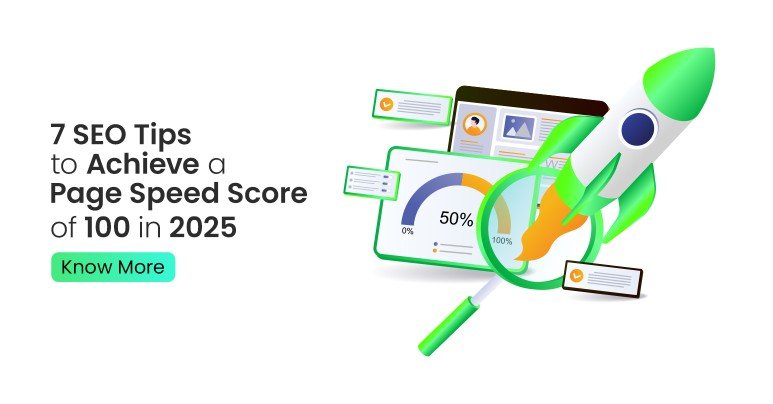In 2025, page speed remains a critical factor in SEO and overall user satisfaction. With increasing competition online and search engines placing more emphasis on load times, achieving a perfect score of 100 on Google PageSpeed Insights is essential. Fortunately, optimizing your site for speed doesn’t have to be overwhelming. Here are seven detailed strategies to enhance your website's performance and improve its page speed.
1. Use a Theme Made for SEO
Choosing the right theme for your website is foundational. A well-coded, lightweight theme can significantly impact both your speed and SEO. Here’s how to select the right theme:
- Research the Theme: Look for themes like GeneratePress, Astra, or Schema that specifically emphasize speed and SEO best practices.
- Check User Reviews: Look at user feedback regarding load times and performance.
- Test It Out: Use tools like GTmetrix or Lighthouse to assess the theme’s impact on page speed before fully committing.
These themes are designed to reduce bloat and unnecessary code, which improves your overall loading times and responsiveness.
2. Implement File Caching
File caching stores a static version of your web pages so that returning visitors don’t have to reload all resources every time they visit. To effectively implement file caching:
- Use a Caching Plugin: Plugins such as WP Super Cache, W3 Total Cache, or Cache Enabler handle caching automatically, improving load times for users.
- Enable Browser Caching: Set expiration dates for resources in your .htaccess file. For example:
<IfModule mod_expires.c>
ExpiresActive On
ExpiresDefault "access plus 1 week"
ExpiresByType image/jpg "access plus 1 month"
ExpiresByType image/png "access plus 1 month"
ExpiresByType image/gif "access plus 1 month"
ExpiresByType text/css "access plus 1 week"
ExpiresByType application/javascript "access plus 1 week"
ExpiresByType application/x-javascript "access plus 1 week"
</IfModule>
This allows browsers to cache static files, leading to faster load times for returning visitors.
3. Optimize Lazy Loading
While lazy loading is beneficial for large images and non-essential resources, its implementation must be strategic:
- Don’t Lazy Load Above-the-Fold Elements: Critical assets that users see first, such as headers and key visuals, should load immediately to ensure a smooth user experience.
- Use Plugins Wisely: Plugins like a3 Lazy Load or Lazy Load for Images can help manage lazy loading without adversely affecting performance.
- Test Loading Priority: Use tools like GTmetrix to test and adjust which images load first based on their position on a page.
Properly executing lazy loading can significantly enhance perceived speed without compromising functionality.
4. Optimize Your Images
Images can drastically affect loading times if not properly optimized.
- Compress Images: Use online tools like TinyPNG or software like ImageOptim to reduce file sizes while keeping quality intact.
- Responsive Images: Utilize the srcset attribute in HTML to serve different image sizes based on the user’s device, which can drastically lower loading times for mobile users.
- Explore Modern Formats: Switching to WebP format can reduce file sizes by up to 30% compared to JPEG or PNG formats. Tools like Squoosh can assist in converting images to WebP.
5. Minify CSS and JavaScript Files
Minification is the process of removing unnecessary characters from code. To effectively minify:
- Use Plugins: Plugins like Autoptimize or Fast Velocity Minify can automatically minify CSS and JavaScript, making it easy to implement.
- Combine Files: Along with minification, try to combine multiple CSS and JavaScript files into one to reduce the number of HTTP requests.
- Review and Adjust: After minifying, test your site to ensure functionality remains unaffected.
Minifying and combining your files will lead to faster load times by reducing the data overhead.
6. Leverage a Content Delivery Network (CDN)
A CDN is vital for spreading content globally, improving speed for users regardless of their location.
- Choose a Reliable CDN: Services like Cloudflare, Akamai, or Amazon CloudFront offer excellent uptime and performance enhancements.
- Configure Your CDN: Proper setup may include custom cache rules and ensuring assets are properly distributed across various edge locations.
- Monitor CDN Performance: Use tools such as Google Analytics to monitor load times and understand how your CDN affects speed.
Utilizing a CDN enhances speed by delivering content from the nearest server to the user, effectively reducing latency.
7. Optimize Server Response Time
The server's response time greatly influences page speed.
- Select Quality Hosting: If your current host struggles with performance, consider moving to services that specialize in speed, such as SiteGround or Kinsta.
- Use HTTP/2 Protocol: If you haven’t already, ensure your server supports HTTP/2, which enables handling multiple requests simultaneously rather than one at a time.
- Audit Your Backend: Check for slow database queries, unnecessary plugins, or unoptimized code that could delay server responses.
By ensuring your server is optimized and responsive, you directly influence your website’s speed and performance metrics.
Conclusion
Achieving a perfect page speed score of 100 requires attention to detail and an understanding of various optimization techniques. By leveraging these seven SEO strategies in 2025, you enhance your website’s speed and, consequently, improve user experience and search engine rankings. Continuously monitor and test your site’s performance to ensure that your optimizations remain effective as technology and strategies evolve. Remember, a faster site is a better site, leading to happier users and improved SEO outcomes.





